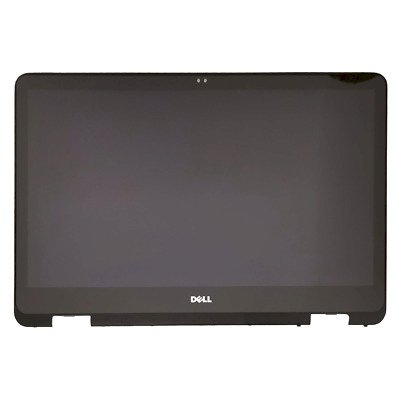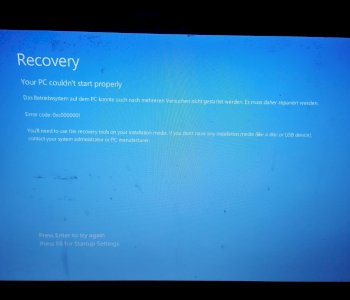External graphics card for laptops?
Assuming you have an external housing plus power supply a PCIe x16 connector… And then of course the interface to the laptop. USB 3, Thunderbird or PCIe… Could you use it to connect any graphics card to a laptop?
Usually the graphics card has its own screen output and an external screen and I'm so unsure about this question.
In the case of the laptop, the picture would have to come back to the internal computer screen via the same connection.
the graphics card would have to output the image via its own output and then back to the motherboard and the screen integrated in the laptop… Can any graphics card do that? Or is it because of the driver? Actually you have the back reaction image, mouse or touchscreen in the computer, the image has to be available internally in the computer
. Certainly one would then also have to deactivate the previous graphics card…
I once had a laptop, the sound card or the speakers was broken, then I installed an external sound card, but then the output was then via this sound card towards the external speakers.
but I think it works.
No, the bandwidth of the 16 lanes that you have at the graphics card slot in the PC can't be replaced via USB3 or just a PCIe lane.
To do this, the laptop would have to have a riser slot with exactly these 16 PCIe lanes. However, I don't know of any such laptop. But there are server blades with riser slots with up to 48 lanes
Look here. https://www.hpcwire.com/2011/01/24/a_case_for_pci_express_as_a_high-performance_cluster_interconnect/
the article also talks about Lanes etc., but I haven't quite got through there yet and only scanned the article… Sata is definitely slower than PCIe. I think even if it is PCIe 1.0 … I now think that there's a lot of throttling in these laptops… Ok, of course the bandwidth is smaller. That's why the RAM also has 200 poles etc… But now believe that even the ram with its 200 poles has to go through this pinhole PCIe. So I think it has the maximum speed… But say beyond thanks for the real talk. Wasn't that an answer to my question and what do you think of the article and the CPU clusters. With the PCIe interface as a "heartbeat"? Where does the heart of the computer actually beat… It has nothing to do with the heart of the alternating current. Because the battery? Does the direct current have?
So I have 3 free PCIe slots on my computer. The dream would be one for a 3D NAND memory. One for a graphics card and one for an extra CPU. Do you think you can?
And then I want to build something into my laptop

https://www.ebay.de/...4512540477
do you think that works? It's all pretty crafted, but maybe better than a new computer? Do you think that works?
Read this through:

https://de.wikipedia.org/...CI_Express
And the main memory is not connected to the CPU via a PCIe lane, it should be direct over many lines, since the memory controller from the former Nothbridge migrated from the mainboard chipset to the CPU.
But generally you mess things up a lot
But that's not this PCIe thing. So the Cipsatz on the Mainbord. There's also virtual RAM and it is then controlled via PCI. Maybe the speed depends on these lanes. There are just a few available with the working memory also because of the available poles than with Sata. But can it be that all lanes are available for all PCIe connections? That the lanes are virtual and no cables on the mainboard. That you can even connect working memory via PCI… Bus systems probably work just like broadcasting… The many lanes are made available in encrypted form in a cable signal and the address then knows whether it is meant.
Actually means x64. That you have 64 lanes at your disposal? That is the bit width per signal how many lanes does such an Intel GN45 chip have?
Yes, that means that they just can't be squeezed into a plug, otherwise you'd love to save the space on the mainboard for the many cables and the wide slot
But actually it is the case that although such a cable is not a fiber optic cable, the current is very fast there… Maybe not the speed of light. But current speed… Can't it be that there's just one signal? Or one way back and one? And I think the lanes are not the x64 but depend on the motherboard chipset set and the number of CPU contacts and have a 64 bit signal unit. Probably an address in front and then the info. Also with e.g. 3Giga Herz is actually this one power line not exhausted. Sometimes I think that this thing with the connections is just there to make money… There's something like a voltage control with every connection, or I like to be inspired. Other things… Ok the 3 different currents with different volts. But I think the info is only brought through a line… And then somehow translated. With e.g. Someone said that a higher frequency memory can also be plugged onto a slower port because it is ultimately the memory that determines the speed due to its latency times. So until he then returns as a mini machine… It's all just money making. But strangely, the GNU scene is somehow going downhill, I don't want to say… But that and putting together your own computer. Somehow that was more popular earlier. But maybe I'm wrong too.
And that's why PCIe is backwards compatible. Because there's only one light or current speed signal… In theory, a device could resolve this signal itself in x 16 or even more and then connect it to the time-latent storage and computing processes…
many always speak of fiber optic cables. I believe that this only makes sense over long distances, because then too much resistance would then spread in a copper line. But on a small scale it's actually almost the same speed. Just nobody knows.
But the sick thing about it is that you can use this signal everywhere, which is definitely connected to the CPU and the motherboard chip, which probably only has an external function. So egg yolk in the heart of the computer… Now you have to imagine it in terms of security technology… In terms of security technology, you should actually have an additional computer as a firewall at every connection to the computer in order to have an externally secure system…
Therefore this downgrade also makes a positive sense. Because the address will probably be queried beforehand, selected and only a selection passed on… But you can be sure of that. Or is there definitely no background currents, etc. Strangely enough, nobody is interested in this.
You can be sure that all of this would have been done for a long time, if it were technically possible. Only at the frequencies already used, you have to fight terribly in terms of inductances and capacitances, because every straight conductor path is actually a coil that acts against the neighboring lines is also connected to a condenser. At the end of such a line, there's no longer a clearly digital signal, but a rather smooth voltage curve from which the data actually transmitted can only be guessed at.
Therefore, the masses of data that a high-performance graphics card needs, unfortunately, still have to be divided up into more independent lines


